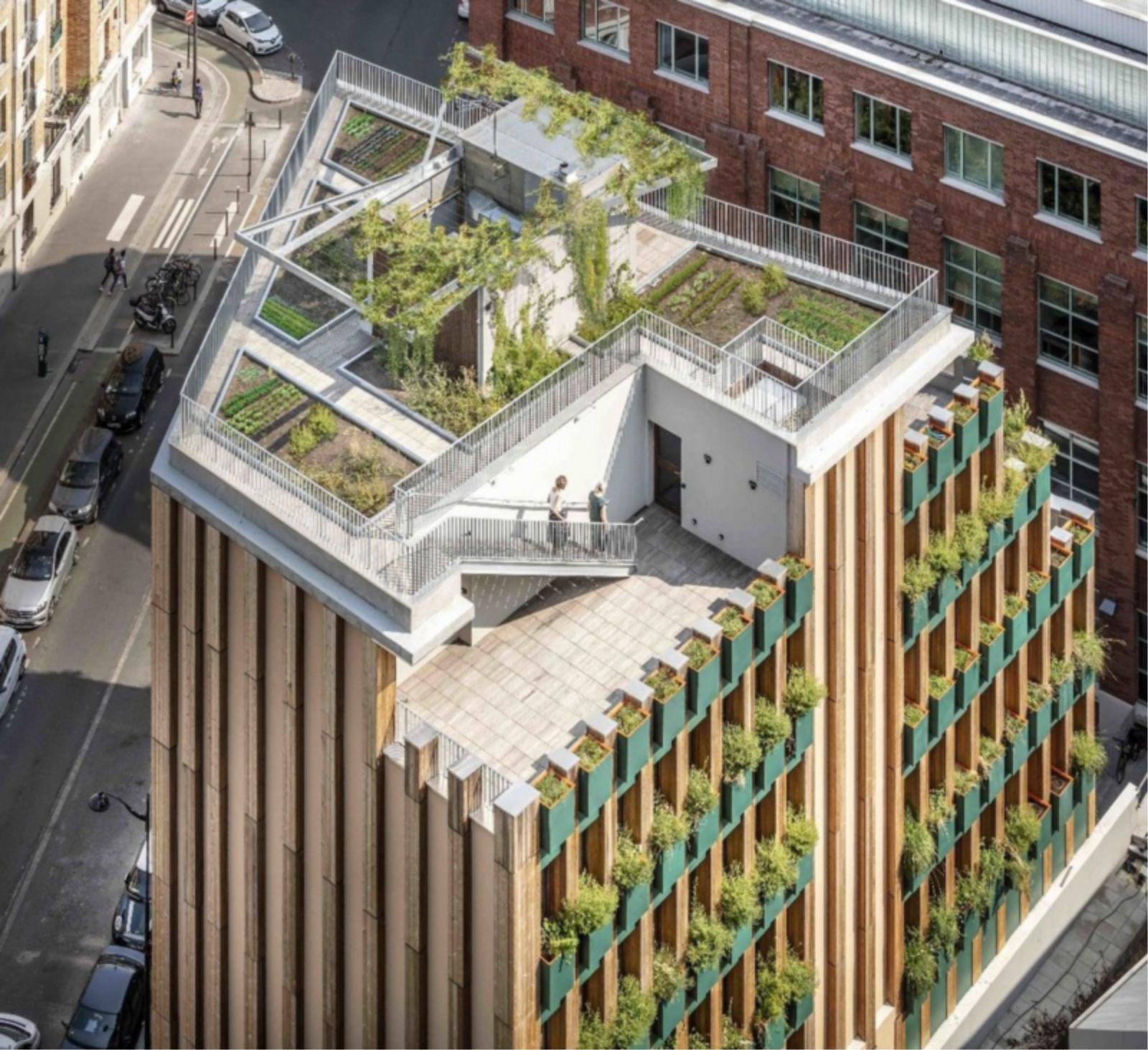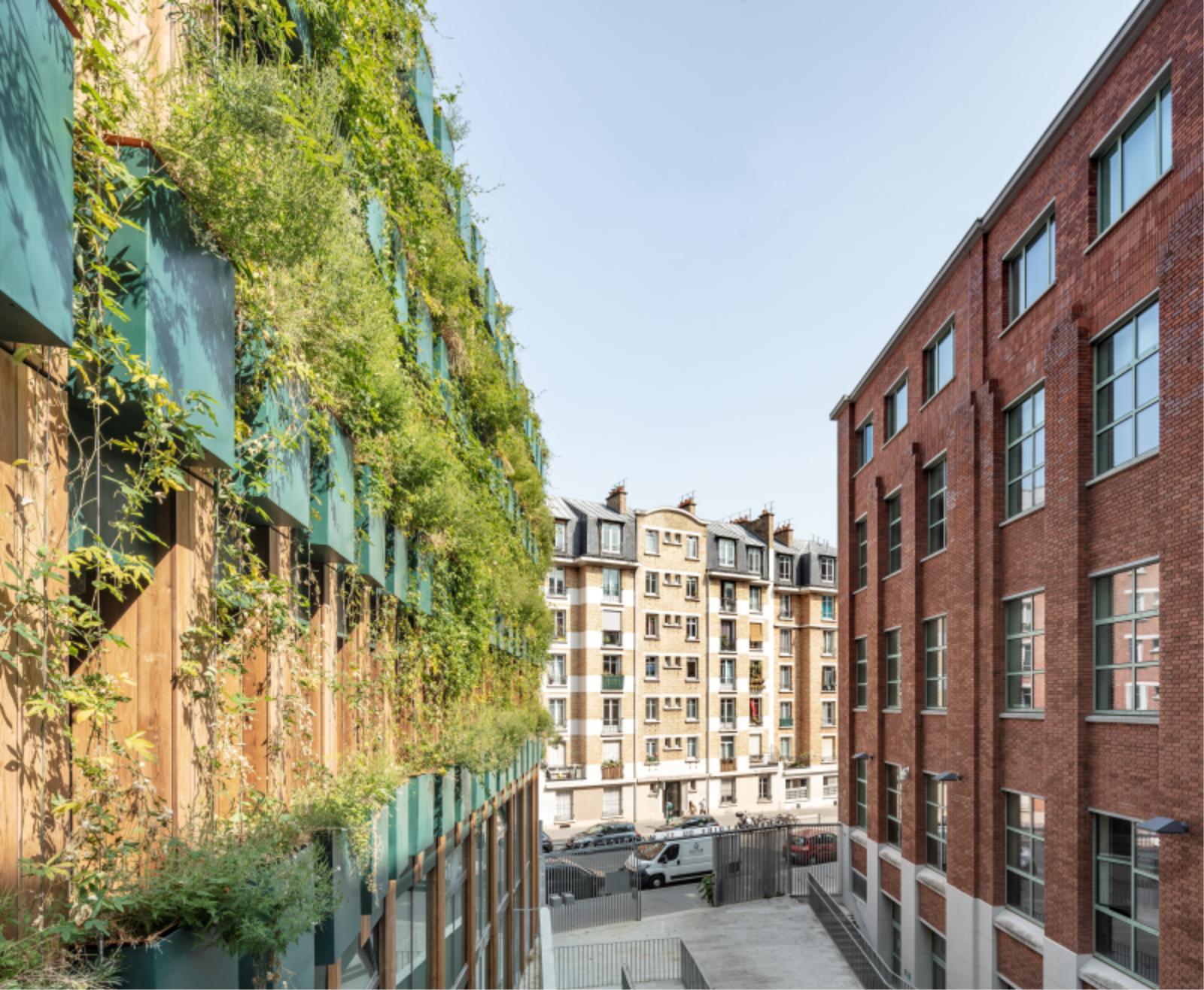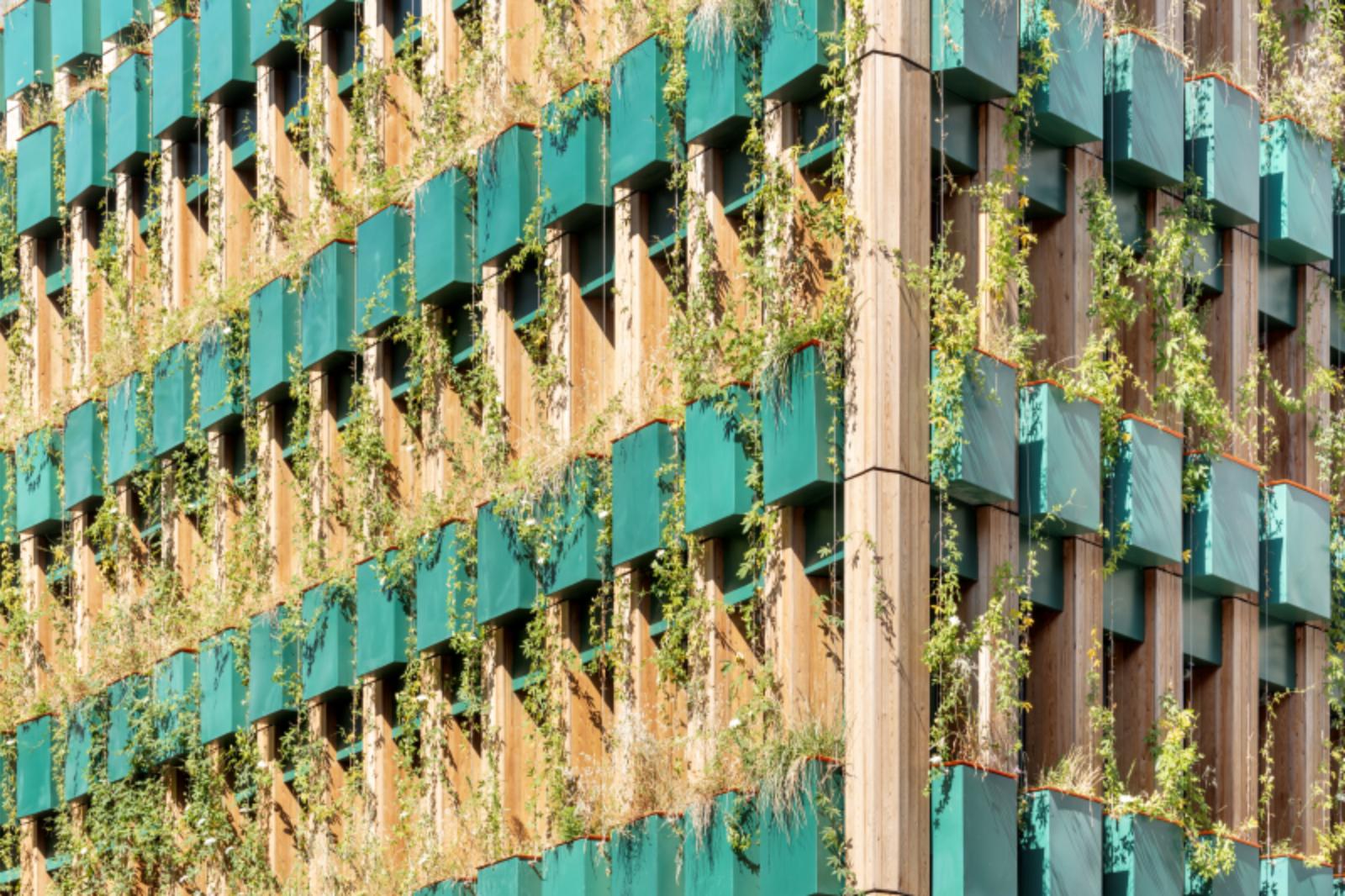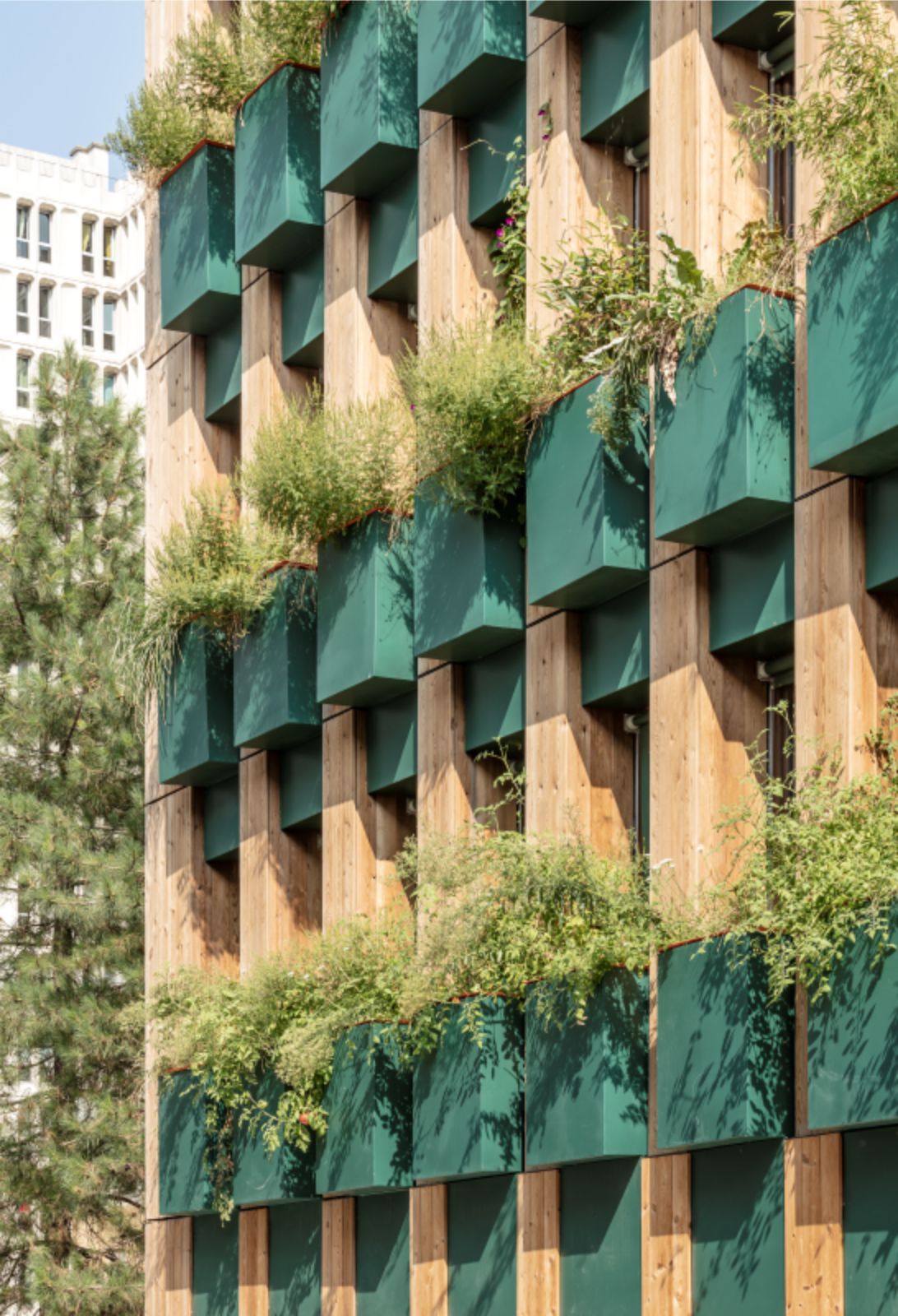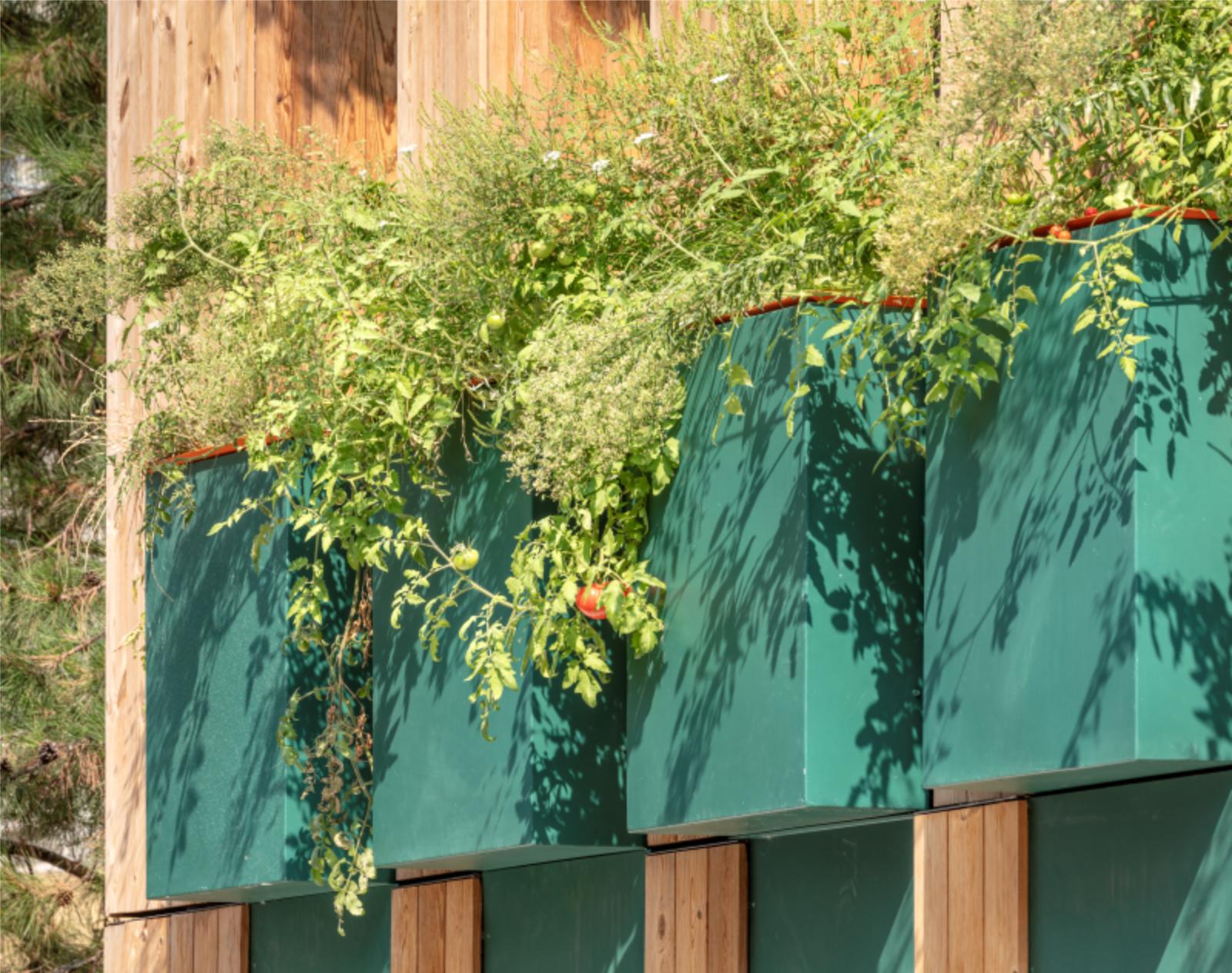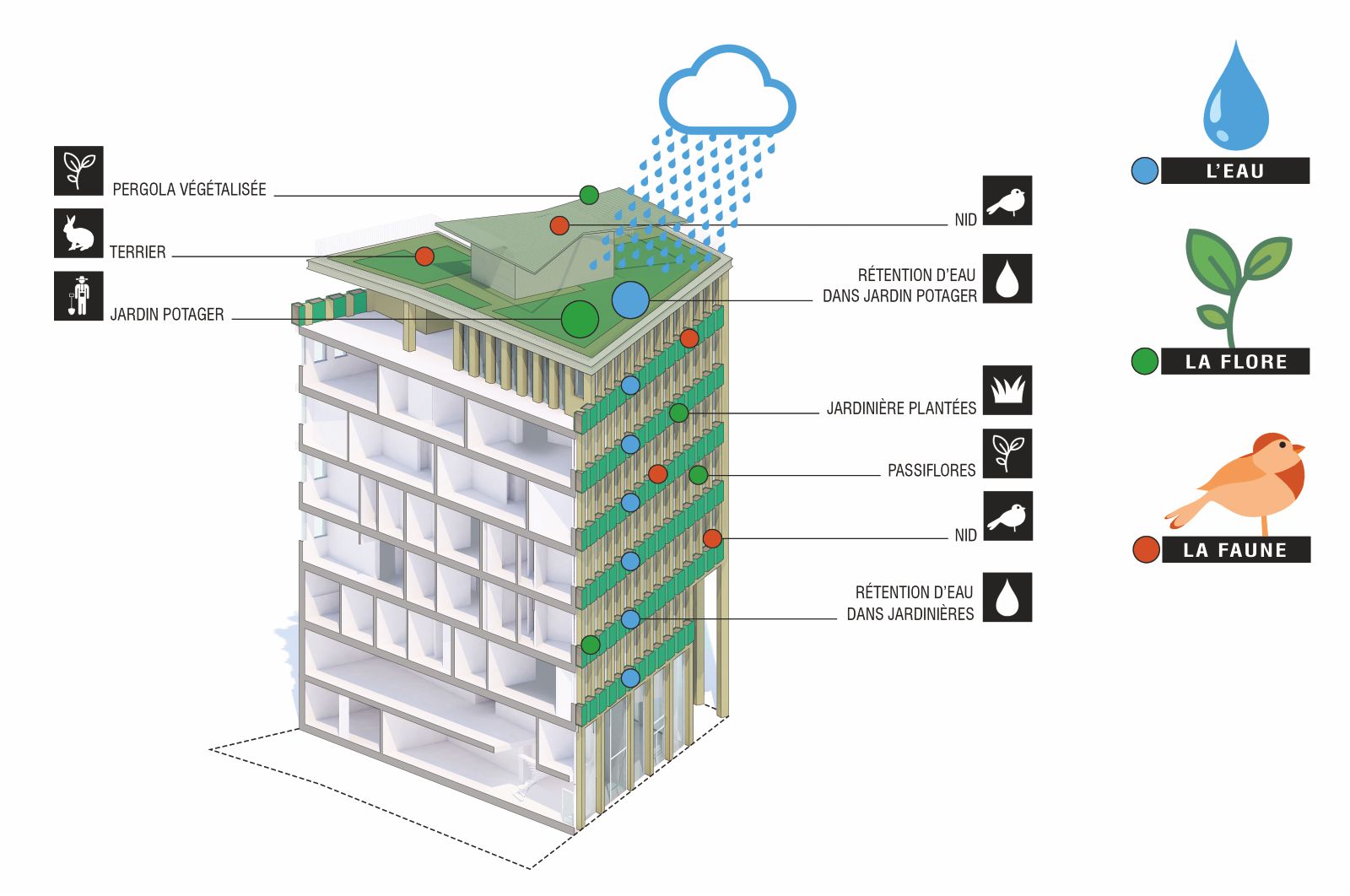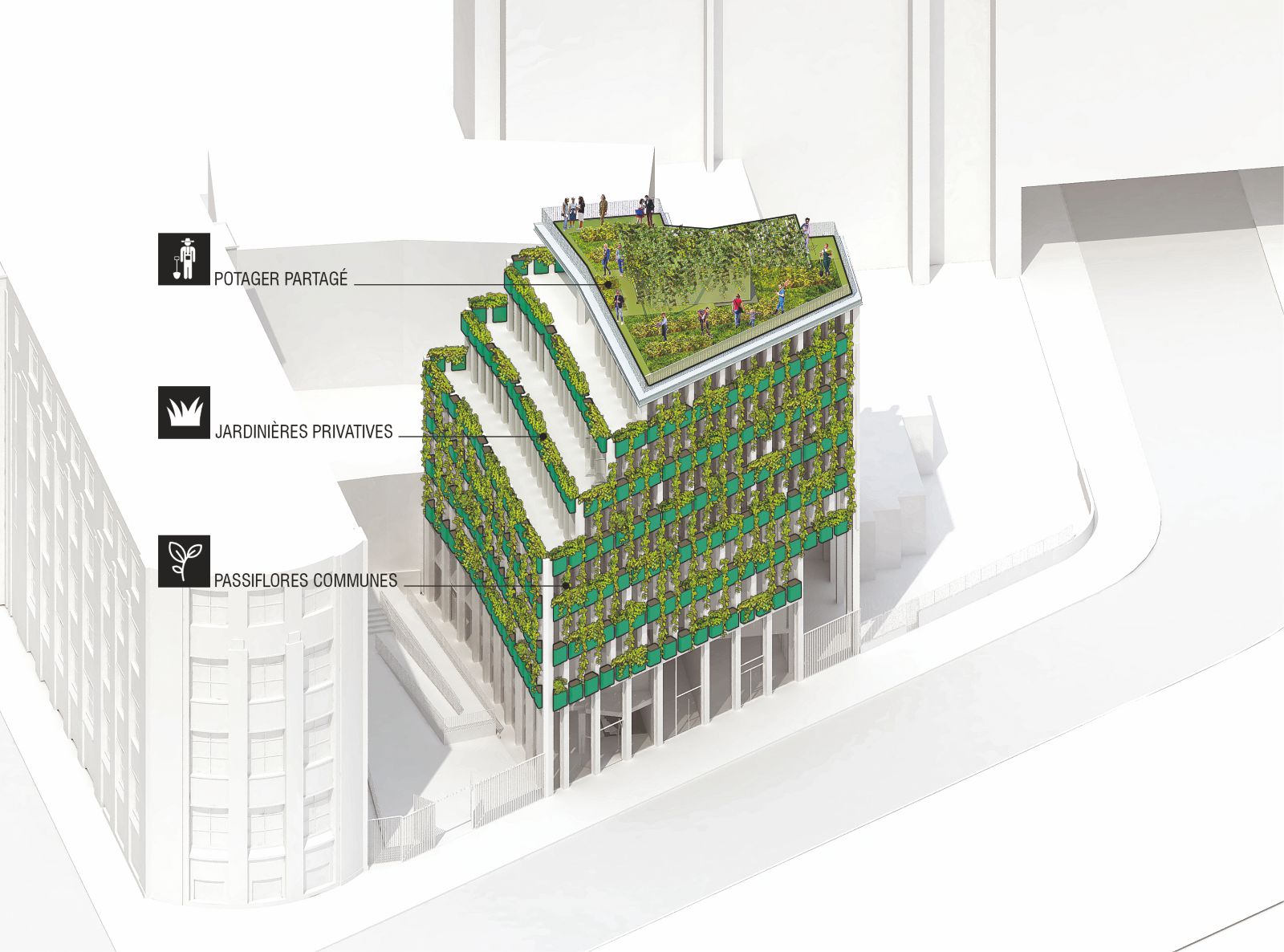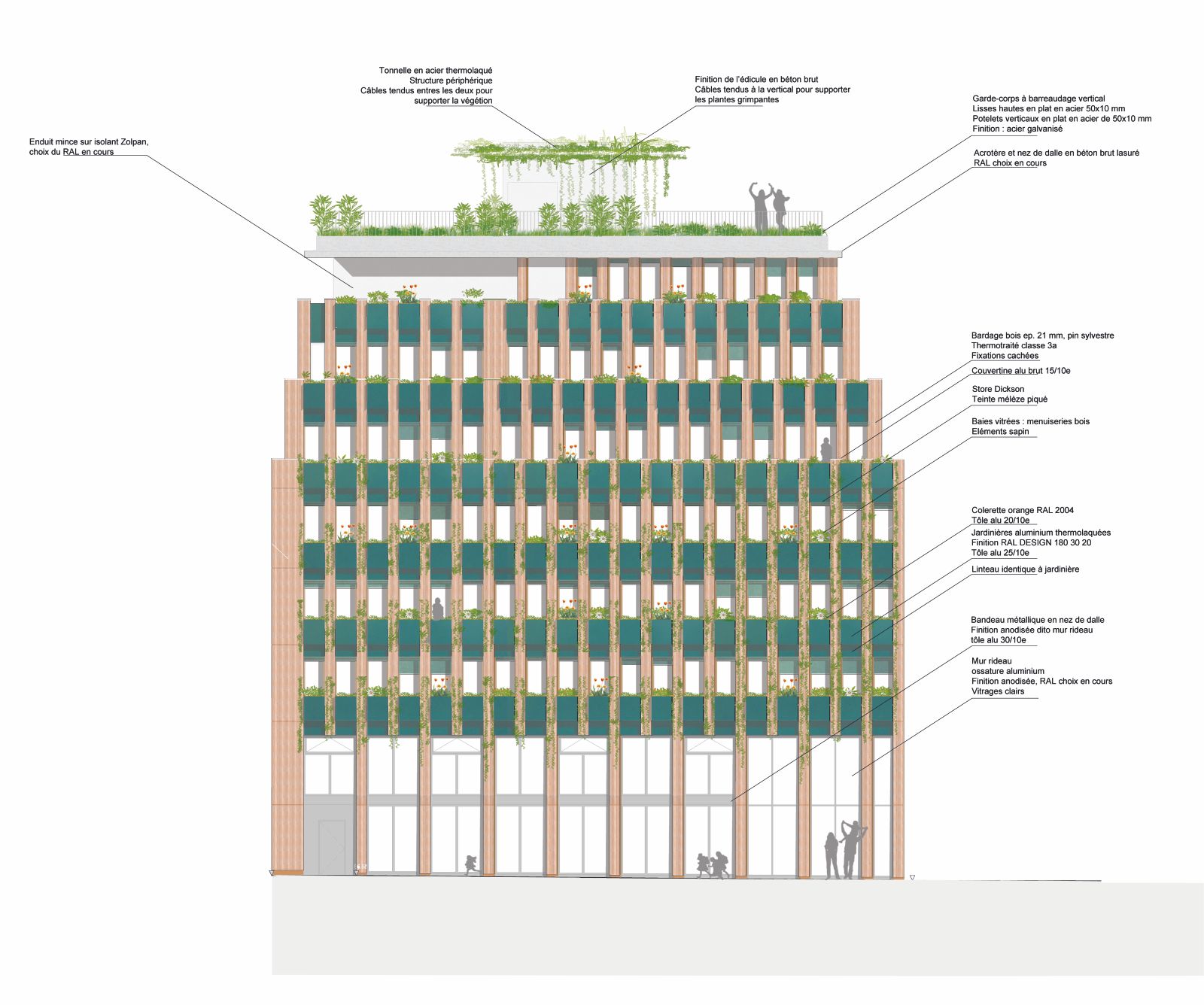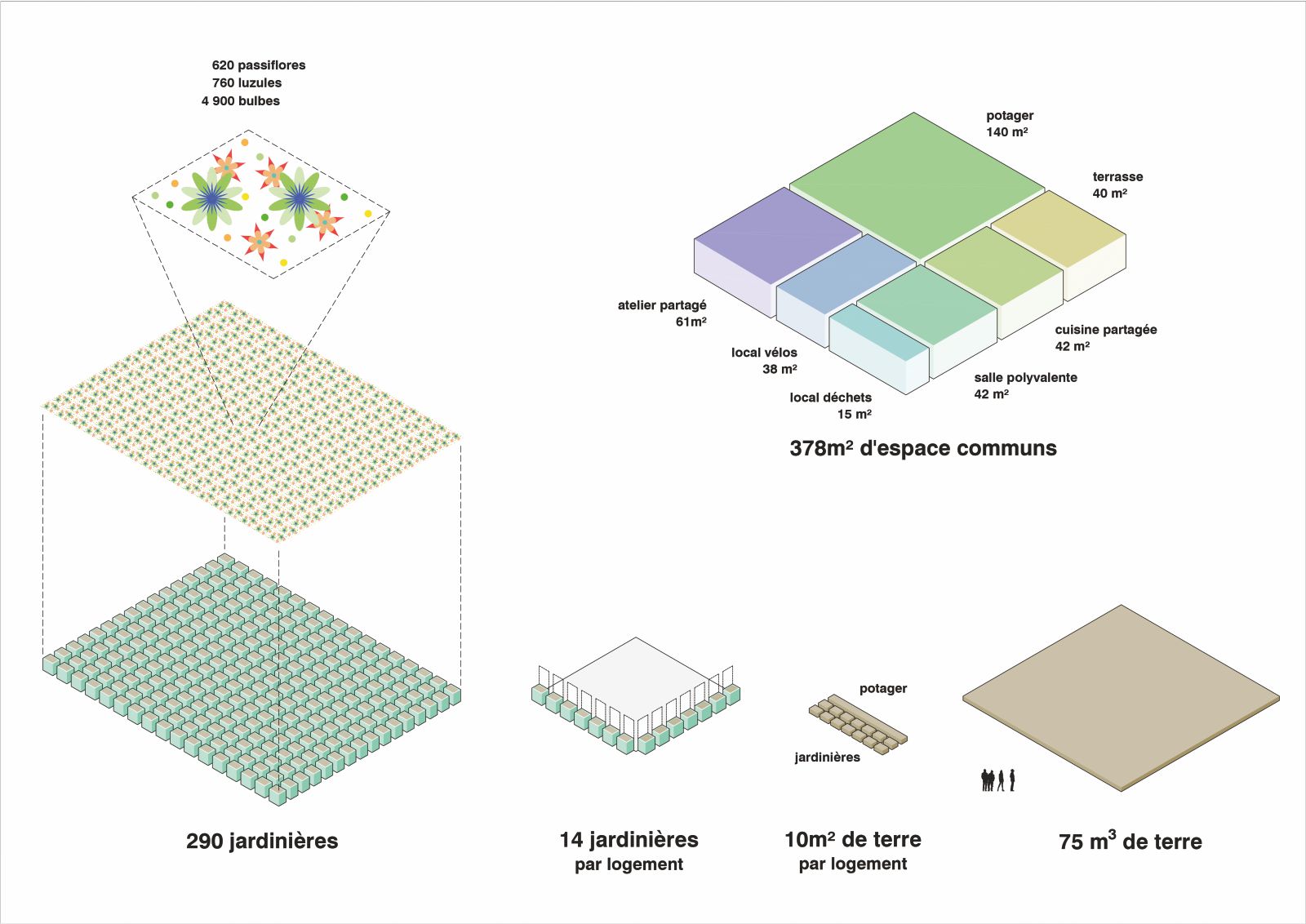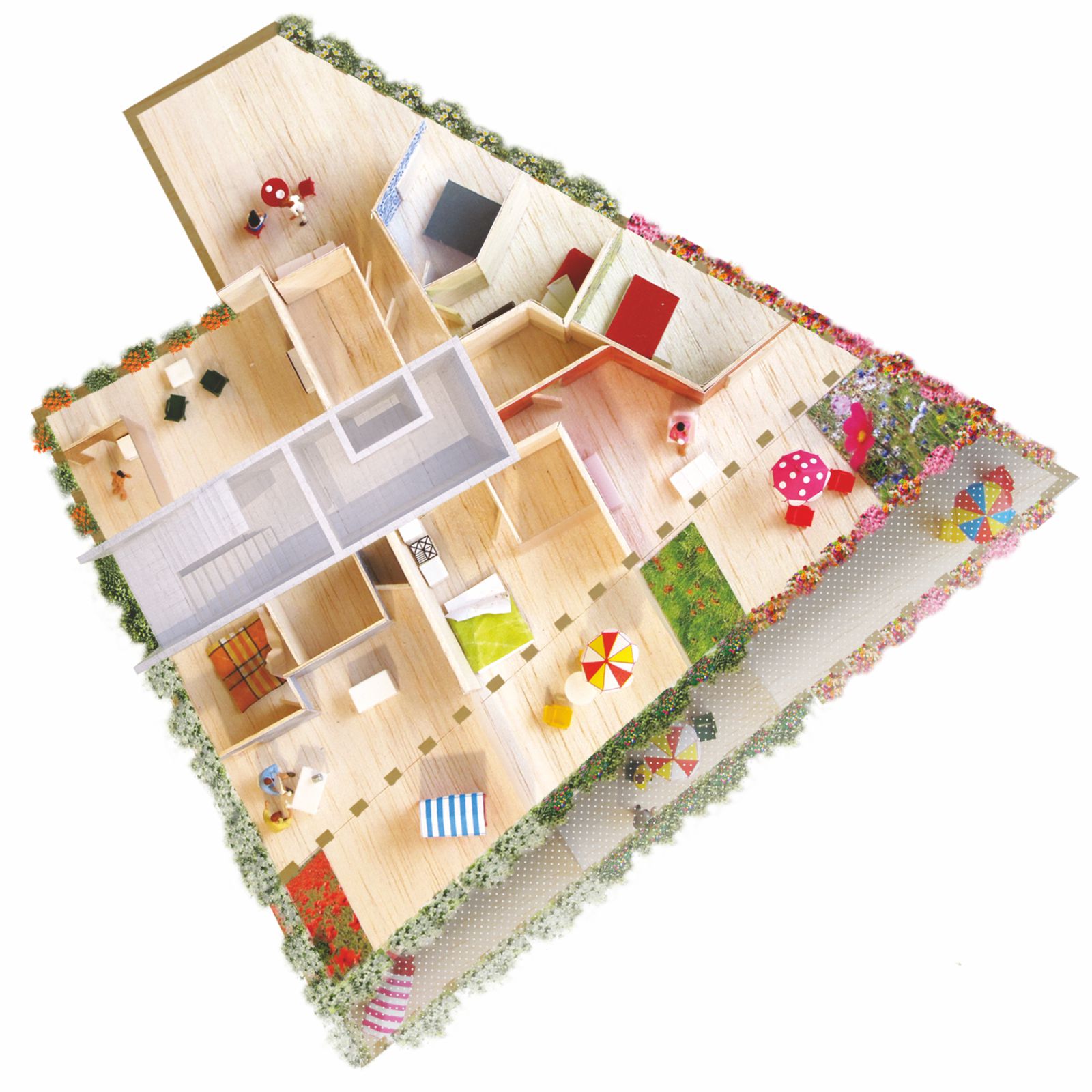EDISON LITE project proposed a new housing model, based on three main principles that we established:
- The creation of ‘made-to-measure’ housing units, whereby the future residents were able to participate in establishing the brief as well as the design of their home;
- The provision of 20% extra surface area, defi ned and shared with the residents: this provides access to space and facilities that would not otherwise be available to individual residents;
- To welcome residents into an existing landscape: largely planted during works, the architectural project includes 75 m3 of soil, divided between 290 planters and a large, 150 m2 allotment on the roof.
These plants have had time to establish themselves and grow before the arrival of residents. Residents are thereby greeted by an established natural environment, for which they will have responsibility. The project thus proposes a sort of ‘permacultural’ way of life: residents will produce some of their own food, learning the pleasure of watching food grow, a means of encouraging them to participate in the collective eff ort that we must all undertake to reduce supply chains and move towards a landscape of edible permaculture as near as possible to home.
With regards materials, the project set itself the principle of ‘the right material in the right place’. The result is an optimised combination of concrete, timber and metal. It should be noted that the apartments are sold at a fi xed price of 7,990 € incl. VAT per square metre, around 30% lower than the market rate. All sales and marketing was conducted online thanks to online platform HABX: nearly 2,000 applications were received for the 13 open-market units. The buyers were selected according to a variety of criteria aimed at ensuring a community of residents both diverse and compatible.
A Cramped Site In Paris’ 13th District
The site is right next to the Place d’Italie in the 13th arrondissement of south-east Paris, a tiny residual space of 415m2 abutting the site of the Maurice Ravel school of music. This tiny plot is entirely enclosed in the midst of extremely varied urban fabric, both in terms of architectural treatment as well as of the imposing height of the built masses that dominate it. Thus dominated by these constructions and enclosed by the site’s restrictive perimeter, we designed a project that aims to outmanoeuvre these constraints.
We quickly became aware that this site is representative of the challenges of tomorrow’s cities, where densifi cation has to be approached very carefully, developing good manners with regards the diff erent buildings in close proximity. Rather than dismissal, the occasional densifi cation of certain sites must rather bring a kind of renewal and reattribution; here, in this existing site of only a few hundred square metres, the construction of a new project must add value and literally embellish it.
More than 20% of Space Shared by Residents
The second major innovation is the construction of more than 20% of communal space programmed and shared by the residents. These communal spaces were designed as a route, accompanying the residents and providing them with meeting places from the basement
level right up to the roof. This provides them with areas and functions that they would not individually have been able to create.
It must be noted that these ‘extra’ functions occupy a privileged position within the building, that which would usually be reserved for the best, and therefore most expensive, apartments on the upper fl oors. We thereby made the choice to assign the project’s best spaces – those with the best views and most sunlight – for all the residents to share. A large part of the added value of this project thereby comes from its capacity to create a unique atmosphere, inviting each resident to use these shared spaces, to feel at home and spend a lot of time there.
- In the lower section of this route, at level -1, is a large workshop for residents’ use, close to their basement storage; on the ground fl oor is a secure bicycle storage area, accessed from the large shared entrance hall.
- On level 6 is a huge area comprising a south-facing sun deck and a west-facing open-air communal barbecue kitchen facility.
- Above, on level 7, is the 150 m2 allotment, which crowns the project with 360-degree views.
These shared amenities shape the project, infusing it with real community spirit; they really constitute the binding agent in the project, weighing in the decision to come and live here rather than somewhere else. They crystallise the residents’ aspirations, an expression of a kind of stimulating generosity, of fl exibility and fl uidity, able to provide that which an apartment building cannot usually provide: it off ers something of what’s found in a house with its own garden, but without the inconvenience of being far from central Paris. These spaces will contribute to the formation and narrative of the new model of housing that we all dream of.
Close to Nature
Abundant planting in the communal spaces continues into the private spaces, constituting another major undertaking of the project. Situated on a narrow plot surrounded by buildings, some imposing, we designed facades that were both largely glazed but also largely planted, in order to create a kind of fi lter to mask direct views. Thus 290 large planters punctuate the windows of the facade, with an average of 14 planters per unit, which, along with the shared allotment, equates to 10 m2 of soil per apartment!
The planters have been planted with 310 passionfl ower plants, which ‘belong’ to the collective, along with 4,320 bulbs and 1,418 rushes (Luzula) in the residents’ private planters. More than 6,000 plants were thereby planted before the residents’ arrival, ensuring the established planted landscape that we see today. Our objective was to create a continuum between residents and nature: no window is bare, each is equipped with a planter in front, dressing the view, framing the landscape and projecting the resident into a planted
foreground.
The apartments become components of a larger ensemble, integrating residents in an expanse of nature, which envelops both facades and roof. The architecture of the project is rooted in soil, earth, water, plants: coming right into the foreground, this vegetation creates the repository for the apartments and families that live in them. Thus, every family has the impression of living within the landscape that we designed, and which was already there. Each family has the responsibility of looking after it, ensuring that it fl ourishes and spreads across the facade and over the roof, to live in harmony with it. Source by Manuelle Gautrand Architecture.
- Location: 71 avenue Edison, 75013 Paris, France
- Architect: Manuelle Gautrand Architecture
- Landscape: BUREAU BAS SMETS
- M&E and Structural Engineers: S2T
- Quantity Surveyor: VPEAS
- Main Contractors: GTM BÂTIMENT: General contractor + HVAC – plumbing + electricity + cladding + external joinery, KETANCHE (sub-contracted): Roof – waterproofi ng, TRACER (sub-contracted): Planters, YSOFA (sub-contracted): Curtain wall + frame
- Client: SCCP EDISON LITE (Loftissime + NFU / HABX)
- Total floor area: 2,067 m2, of which 1,539 m2 housing and 528 m² commercial
- Cost: 4 300 000 € HT
- Completion: 2020
- Photographs: Luc Boegly, Courtesy of METROPOLIS


